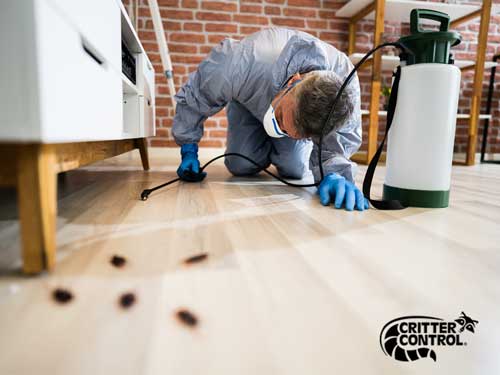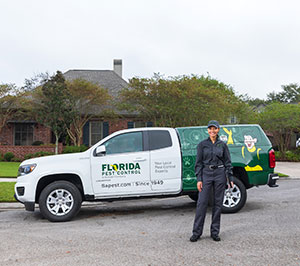Reliable A1 Bed Bug Exterminator Charlotte - Eliminate Bed Bugs Quick
Reliable A1 Bed Bug Exterminator Charlotte - Eliminate Bed Bugs Quick
Blog Article
Bed Pest Therapy Failure: Contrasting Chemical Vs. Non-Chemical Solutions
In the realm of pest control, especially when dealing with the persistent concern of bed insects, the option in between chemical and non-chemical therapy remedies can be an essential one. Both methods provide distinctive advantages and downsides, affecting elements such as performance, safety and security considerations, and overall price. By examining the nuanced details of each method, a clearer understanding of which path to pursue in attending to a bed insect problem can be attained.
Efficiency of Chemical Therapies
Chemical therapies for bed bug problems have been widely recognized for their quick and potent efficacy in getting rid of these insects. When thinking about the effectiveness of chemical therapies, it is vital to recognize that they can give a fast and thorough service to a bed insect trouble. Expert pest control specialists typically rely upon insecticides to target bed bugs at various phases of their life cycle, consisting of grownups, fairies, and eggs. These chemicals typically function by disrupting the bed bugs' nerve system, leading to paralysis and ultimate fatality.
Furthermore, chemical treatments have the advantage of providing recurring results, suggesting that they can remain to get rid of bed insects even after the first application. This recurring activity is specifically helpful in combating any possible re-infestations. Furthermore, the rapid action of chemical therapies can bring alleviation to people dealing with extreme bed bug infestations, allowing them to reclaim control of their living rooms promptly.
Security Interest In Chemical Solutions
One important facet that needs cautious consideration when using chemical services for bed pest treatment is making sure the security of owners and the atmosphere. Exposure to specific chemicals utilized in bed insect treatments can lead to respiratory system problems, skin inflammation, or other negative reactions, especially in individuals with pre-existing conditions or level of sensitivities.
Additionally, the ecological impact of chemical services is one more significant consideration. Some pesticides made use of in bed pest treatments might be harmful to valuable insects, wildlife, and communities if they leach into the dirt or water supply. It is vital to use chemical therapies sensibly, following security standards, and considering much less hazardous options to mitigate these risks and make sure the secure and efficient management of bed bug infestations.
Benefits of Non-Chemical Strategies
Considering the prospective safety problems and environmental effect linked with chemical options for bed pest therapy, checking out non-chemical approaches offers an encouraging alternative with a number of distinctive advantages. Non-chemical therapies are ecologically pleasant, as they do not add to air or water air pollution, making them a sustainable selection for pest control.
In addition, non-chemical options can be efficient in targeting bed insects, consisting of hard-to-reach areas where chemical therapies may not pass through - A1 pest control charlotte nc bed bugs. Methods such as heat therapy, vacuuming, steam cleaning, and cushion encasements provide complete removal without the use of unsafe chemicals.
Limitations of Non-Chemical Treatments

Additionally, non-chemical useful reference treatments usually need multiple applications to accomplish effective elimination. This can be taxing and may not always ensure complete elimination of all bed pests and their eggs, specifically in hard-to-reach or concealed locations.
Moreover, the success of non-chemical therapies greatly counts on appropriate application and thoroughness, which can be testing for people without visit site specialist know-how. Poor application of non-chemical approaches might result in insufficient obliteration, causing consistent problems and the requirement for extra treatments.
Therefore, while non-chemical treatments have their benefits, it is necessary to recognize these limitations and consider them when identifying the most reliable method for managing bed insect invasions.
Price Comparison: Chemical Vs. Non-Chemical Options
Provided the constraints associated with non-chemical therapies, a vital element to assess in the context of bed bug monitoring is the price contrast between chemical and non-chemical options. Chemical treatments generally entail the application of insecticides by professionals, which can range from $250 to $900 per space, relying on the extent of the invasion and the dimension of the location to be treated. On the other hand, non-chemical treatments like warm treatment or heavy steam can be much more costly, with expenses ranging from $1,000 to $6,000 for a whole home. While the initial cost of chemical treatments may appear lower, multiple treatments may be required to completely eliminate the invasion, possibly raising the overall cost. On the other hand, non-chemical choices may supply an extra sustainable and eco-friendly remedy, although they can be cost-prohibitive for some individuals. Ultimately, when thinking about the price of bed bug therapy options, it is essential to evaluate the pest control help ahead of time expenditures versus the performance and long-lasting sustainability of the chosen technique.
Conclusion

Considering the potential safety and security issues and environmental effect associated with chemical solutions for bed pest treatment, discovering non-chemical approaches provides a promising alternative with several distinctive advantages.Given the restrictions connected with non-chemical treatments, an essential aspect to examine in the context of bed insect administration is the cost comparison in between chemical and non-chemical alternatives. In comparison, non-chemical treatments like warm therapy or steam can be more costly, with expenses ranging from $1,000 to $6,000 for an entire home. While the initial expense of chemical therapies may seem reduced, numerous therapies may be needed to fully eradicate the infestation, potentially raising the general expense.In verdict, when contrasting chemical and non-chemical bed bug therapy alternatives, it is crucial to take into consideration effectiveness, safety, advantages, constraints, and price.
Report this page